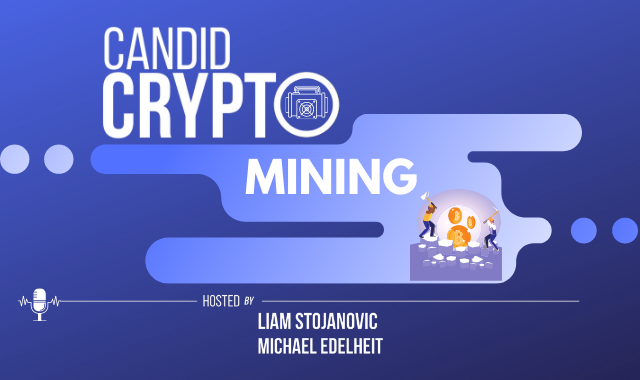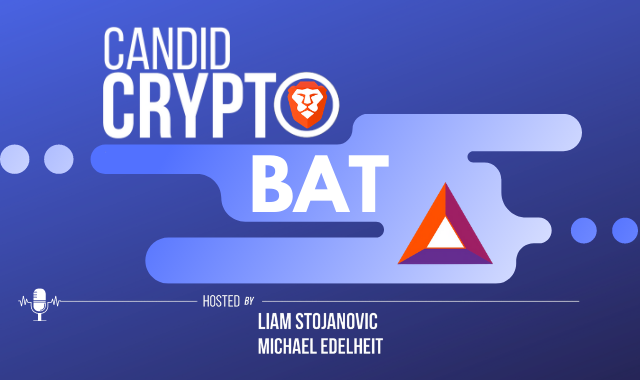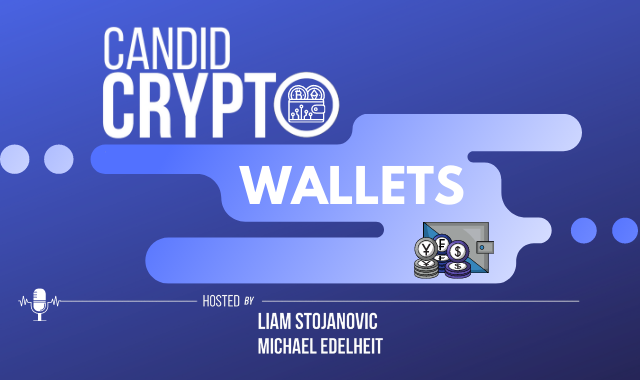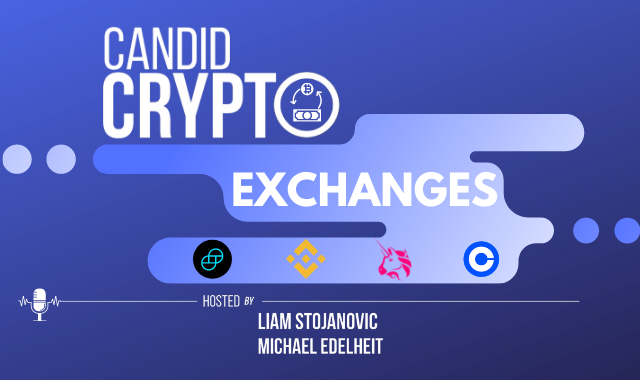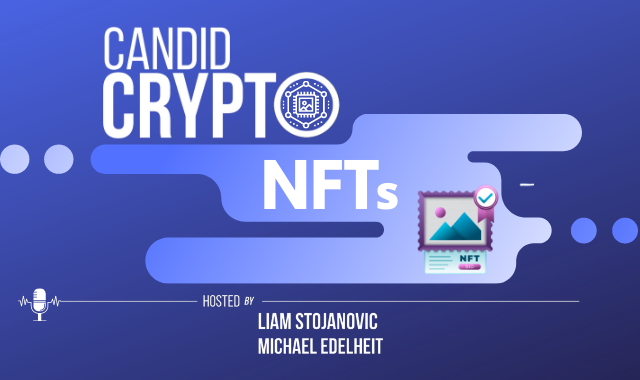012: Mining
Bitcoin, the rare earth metal of the internet. Learn about crypto mining from a high-level perspective, while we share our personal experiences mining cryptocurrencies. We also discuss, why China wants to ban mining? What does it take to mine crypto?
Please leave a comment and let us know what you think about this episode. You can find Candid Crypto on all your favorite podcast platforms, so please like and subscribe to stay up to date on everything crypto!
In addition, every Candid Crypto episode is transcribed so you can easily understand everything that was discussed.
Episode 12 Transcription – Mining
Liam 00:01
Welcome to Candid Crypto, a place where anyone can learn about Blockchain Tech.
Michael 00:08
We are two friends who love cryptocurrency and have acted as retail investors and researchers for years. I’m Michael
Liam 00:16
And I’m Liam. Our goal is to create a community where listeners can build their knowledge and meet like-minded people in the digital asset space.
Michael 00:28
Welcome to another episode of Candid Crypto. Today, Liam and I are going to be discussing cryptocurrency mining. What exactly is it? And just some basic components that are involved?
In general, there’s a lot that goes into cryptocurrency mining. We’re going to cover pieces of it today. Look out for future episodes going more into the detail, technical nitty gritty when it comes to mining because we also really love that part too.
Liam 00:57
Yep. Today’s overview is certainly high level. We’re planning to just go over the basics with you.
Michael 01:04
Recently, mining has been kind of a topic in the news, just due to the fact that China just banned mining in their country, which is huge.
Liam 01:17
Huge. And the narrative lately the one that I’ve seen the past few months is that; Mining wastes energy, it contributes to climate change. Technically, yeah, it does. We’re expending energy to run these mining rigs. So why would China have banned Bitcoin mining? That seems pretty strange to me.
Michael 01:39
It does seem strange because before now, they were the main producer of mining rigs and mining technology. And they also had the most operating throughout the past decade, they’ve built out the infrastructure and they have cheap electricity, mainly due to coal, which isn’t good for the earth. So maybe that’s why they are cracking down because more people are talking about the impact it has on climate. I think that’s a little bogus. I think if you take a larger look at cryptocurrency as a whole, we talked about Bitcoin being a global currency, allowing financial freedom to anybody that has access to the internet. That seems to go against the kind of communist values and the Chinese Communist Party. Yes, billions of people are seeing the potential of cryptocurrency broadcasted over their local news channels and China. And they start questioning I think it’s more the Chinese government said, Nah, they kind of wanted to take hold of that control a little bit more.
Liam 02:50
I agree a decentralized global currency that’s permissionless just does not align with CCP values. The most likely answer is that the CCP is building their own crypto, which rumor mill has it that they are and it would totally make sense that they ban Bitcoin and then unveil their own cryptocurrency.
Michael 03:10
The weird thing is, that could be true except I’ve heard that China and the provinces where most of the mining is occurring. They’re telling those cities to basically uproot all the infrastructure that they’ve worked really hard to build. You know, for a while I had the concern that China was just going to overtake Bitcoin somehow because they had the majority of the mining capacity.
Liam 03:38
We’ve talked about 51% attacks in the past. And what that really boils down to, is if one single entity controls 51% of the Bitcoin network, it’s feasible for them to create fake transactions or fraudulent activity on that Blockchain. And that has been an attack that has been known since Bitcoins inception, the 51% attack was really putting it on the minds of people when Bitcoin had first started out, because who was to say some dude with a massive data center; couldn’t just come in and do a 51% attack on an infantile young Bitcoin Blockchain. That never happened. But the concern was totally valid with a totalitarian government having the ultimate say over how mining activities were performed.
Michael 04:32
And like you said, I mean, this really just shows that Bitcoin successfully completed another test, that it’s not all reliant on China and it actually has a lot more potential, and now that it’s becoming more distributed. I think that’s good.
Okay, so that’s a little kind of segment on China and the events occurring the current day as of the beginning of July 2021. So Liam, how would you describe mining at its core? And we can just take Bitcoin because it’s kind of the easiest concept to grasp.
Liam 05:16
Yeah, Bitcoins, the OG, and Bitcoin established what is called Proof of Work, sidestepping all the nerdy stuff. Proof of Work shows that you performed work. It’s in the name. And what that really means is that your computer solved math problems, and it solved enough math problems to prove it did the work. Now, what is the work you might ask?
“It’s really just random math problems that are really difficult to solve, but very easy to prove they were solved. That’s the genius of this entire scheme.”
Bitcoin mining is not constant. It fluctuates in difficulty, as more people come onto or leave the Bitcoin network. Michael, what has happened with the Bitcoin difficulty recently, with China giving the axe to Bitcoin mining
Michael 06:20
on July 2 of 2021, Bitcoin Blockchain experienced the largest decrease in the difficulty I think of all time, it went down by nearly 50%. And we’re talking about what it takes to kind of guess, these math problems/computations that need to actually get that reward of a Bitcoin. It went down by… I think by half, nearly half, which is huge. And you talk about the difficulty, it also kind of correlates to the price, because the price also correlates to the supply and demand.
Liam 07:05
The price of Bitcoin does not necessarily correlate with the difficulty. But they’re fairly intertwined. In fact, one of my early hypotheses, as a Bitcoin enthusiast back in 2013, was that the increase in hash power, which means the amount of people participating in Bitcoin mining, what caused the price to increase? That did happen, but those two concepts, the price of Bitcoin, and the amount of people mining on the Bitcoin network, are not necessarily one to one.
Michael 07:43
You know, the lower the difficulty, the easier it is to mine.
Liam 07:47
So we can put it this way, the reward and the difficulty for Bitcoin are very predictable. If you know the current parameters and the past parameters for the network.
Michael 07:56
Let’s talk about the reward. Everyone wants to know about the reward.
Liam 07:59
Yeah, what’s in it for me. So the reward is what you get as a result of your cryptocurrency mining. In the past, in the very early days of Bitcoin, you could do what is called Solo Mining, you would mind by yourself, and there was a very small chance you would get the reward all to yourself, the reward constantly decreases every 4 years, it gets cut in half.
Michael 08:31
And that’s called the halving events, right?
Liam 08:34
Yeah, that’s called the halving. So the reward gets halved every four years roughly. And that’s done to keep the supply of Bitcoin at 21 million that can ever exist. Right now the Bitcoin reward is… So currently the Bitcoin mining reward is 6.25 It started off as 50 Then it got halved, then it got halved, then it got halved.
Michael 08:58
And those are entire Bitcoins.
Liam 09:00
Yep, you get 6.25 Bitcoin, if you can successfully solve that math problem that needs to be solved for the network. The math problems are arbitrary. They’re purposefully difficult just to keep a cap on the supply.
Michael 09:15
And it’s not really a math number. It’s not really a math problem. It’s more like a really long, complicated number that these mining rigs or these groups of mining rigs are just trying to guess and check and get that number first.
Liam 09:35
Yeah, that’s a good point. It really is a guessing check. Your computer is guessing and checking billions of times a second when you’re mining.
Michael 09:43
Yeah, so what goes into the actual crypto mining rig? And how can you be more likely to mine more Bitcoin or other cryptocurrencies?
Liam 09:55
Yeah, so we have two types of hardware for mining cryptocurrency, we’ll use Bitcoin again as an example. When you mined Bitcoin, you can use a graphics card, like what you use to play video games. If you are a gamer or interested in video/graphics cards, you’ve probably noticed how ridiculously expensive they are lately, like, seriously over like 1000 bucks for current generation video cards. That is because a crypto, the miners are buying up graphics cards left and right, because they can use those to mine crypto. However, there is a different type of hardware known as an ASIC, not the shoe. ASICs are also known as application specific integrated circuits are basically specialized computers that do one thing really well, the computer that you’re listening to this on, be it a phone, or a desktop can do a bunch of things pretty decently. But an ASIC can do one thing very, very, very well. And ASICs for Bitcoin do one thing, only mine Bitcoin. And those are significantly faster, and significantly more power efficient than their GPU counterparts. So back in about 2014.
Michael 11:28
I assume they cost a lot more too.
Liam 11:30
They do and there was a whole fiasco back in 2015, and 2016, related to ASICs. What you really need to know about ASICs is that they can’t be cheap. In terms of the Bitcoin, you get relative to the power expenditure. But yeah, some of these machines are like $30,000. And they only mine Bitcoin. That’s it.
Michael 11:59
Where a GPU can do a whole bunch of different things and is an essential part of a lot of computers.
Liam 12:06
Yeah, because like with the GPU, you could play cyberpunk and then go mine Ethereum if you wanted to, like it’ll let you do both.
Michael 12:14
And that’s really, you know, the magic, or that’s the important piece when it comes to a mining rig. Because a mining rig is all… It’s just a computer. And in order to do this significant amount of computation, it takes a graphics card or an ASIC to achieve that. But the other components that we’re not going to go through it all, but it’s just all the regular parts of a computer fans power supply, motherboard.
Liam 12:45
So really at its core, mining computers are pretty much the exact same as regular computers just with beefed up graphics, or the ability to solve these math problems/cryptography problems very, very, very quickly. Michael and I both have experience with Bitcoin mining. Don’t get me wrong. We’re not running warehouses of Bitcoin miners. However, we have dabbled with creating our own cryptocurrency mining rigs. Michael, I showed you a little bit of that world back in 2018. And I don’t know is your mining rig still running?
Michael 13:23
It’s currently not running just because it doesn’t make a whole lot of sense when it comes to power in my current location. But besides that, I have it right next to me. I love looking at it because, I mean, it was a lot of fun building that with you. I learned so much building this, my first mining rig and I honestly think that really helped motivate me to you know, get more invested in cryptocurrency and to research more, because like, we actually built something and we built the printing press.
Liam 14:00
We built a printing press, we can literally generate money by giving this machine electricity. I love that.
Michael 14:09
And we weren’t mining Bitcoin because Bitcoin there’s a lot of competition. We were mining something a little bit more niche. And we can go into that in another episode. But you know, the process of building your own computer/mining rig was really fascinating. And I really appreciate your help on that. And I want you to share some of your experiences because it’s a lot more than mine.
Liam 14:36
Certainly. So I am a tinkerer. I love to experiment with computers and tech. Bitcoin and cryptocurrency mining rigs in general are not super complicated. Yeah, you got to hook up the graphics card to the motherboard. Get a power supply. But besides that, that’s really all you need. And then a way to control the mining rigs remotely I began my foray into mining back in 2017. I bought 8 1080 ti’s, and I put them together in parallel across a big slab of steel. That mining rig was obnoxiously consuming power, I was running it first out of my college housing, which had free electricity conveniently. And then I brought it to my parents’ house, but they weren’t thrilled that I was pulling 2000 Watts from my bedroom wall. I can recall running the mining rig at the same time, my sister was using her portable heater, and then the circuit broke to the entire bedroom area. What I take away was doing a modest hobbyist setup is very feasible. But that complexity becomes exponential when you start filling up a warehouse full of mining equipment.
And so that brings us to the last point, what do you mine? If you have a mining rig? The answer is pretty simple. There is a website called @Whattomine.com. It tells you exactly what you should mine, you put what graphics cards you have on your mining rig, you put the cost of your electricity in cents per kilowatt hour, and then boom, you’re off to the races, you know exactly what you should mind.
Michael 16:32
Yeah, and you know, when it comes to mining, similar to my case, I’m not currently running mine because it just didn’t make sense. But say I tried to mine a different cryptocurrency it could make financial sense. And even if I’m making $5 a day, that’s $5 a day a profit that all I needed was the hardware.
Liam 16:59
If you’re listening to this, and you’re in a college dorm where your electricity is built into your rent, you should maybe consider mining. I’m not advocating for stealing your university’s electricity. But I’m also not saying that you shouldn’t maybe experiment with technology a little bit.
Michael 17:17
Yeah, it’s fun. And I really appreciated when we set up my mining rig, we started off with one graphics card. And as I got more familiar with and interested in cryptocurrency mining, I bought a second graphics card, and it really wasn’t that difficult to just add another card. And depending on how you set up your system, you can add 3, 4, 5 and you can even have up to 8 like you were just…
Liam 17:45Yeah. Well, thank you very much for tuning in to this week’s episode of Candid Crypto. Michael and I are thrilled to have made it to the 3-month mark and we love the support and the feedback we’ve been getting. We are ready to work with eager listeners who want to set up their own cryptocurrency wallets. If you are ready to dive into crypto but don’t know where to start. Reach out to us at Hello @CandidCryptoPodcast.com. We’re more than happy to connect with you and figure out how we can empower you to participate in the world of crypto. Thank you very much for tuning in and take care.

